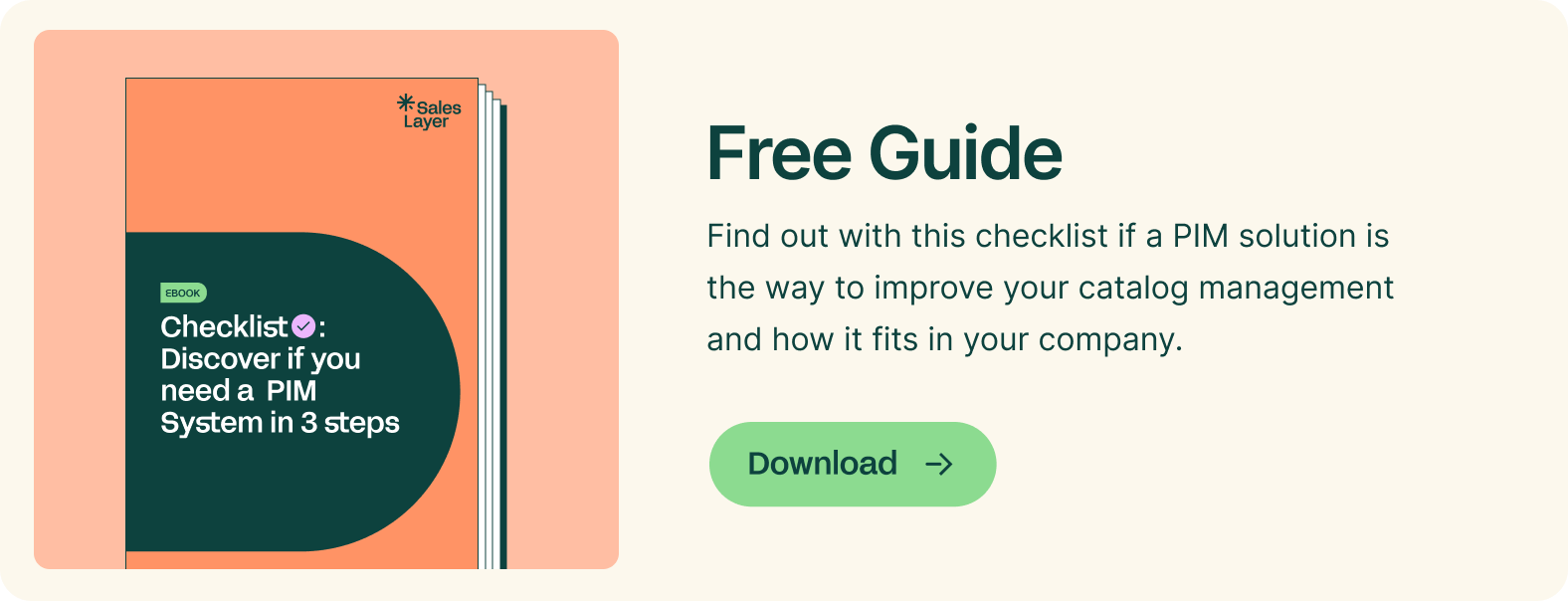
The benefits of implementing a PCM in your company
- Accelerate product time-to-market.
- Increase team productivity.
- Improve conversion, workflows and internal communication with partners, distributors and reps.
- Enhance flexibility in adapting to changes and content updates.
- Harmonize and coordinate different data storage systems.
- Eliminate content redundancies.
- Deliver a consistent brand image in the marketing strategy and across all channels.
But, before you can celebrate all those victories you can achieve with a good PCM, you first have to be prepared to give it the reception it deserves. Do you think you know everything a Product Content Management system requires beforehand?
7 steps to implement a successful PCM
Train your team
Gather all the teams involved (from developers to marketers), identify the workflows you have used so far and which ones you would like to apply in the future, and make a proper distribution of responsibilities and roles when facing product content management tasks.
Each department must be clear from the outset what elements it brings to the product content management process and what role it plays in it. But, above all, time must be set aside to train on the tool, even before the installation has been completed.
This will save you a lot of time that would later accumulate in resolving doubts or discovering that a team knows what to do, but not how to do it.
Identify all your data sources
Keep track of where all the information and product materials you use in the company come from (ERP, CMS, third parties, cloud storage systems such as Dropbox...), and try to unify and organize them as easily as possible, so that access is not chaotic and can be centralized: digital assets (images, videos, PDFs...), catalogs, user guides, listings, descriptions...
Define a Product Content Management strategy
What is the life cycle of your product(s)? It defines all the stages it goes through and the materials required at each stage, from the design and development phases to the final stages of market launch.
In addition, product content management processes cover many elements related to the product, so it is essential to define a map of all the implementation phases and how you want to divide the process: installation, data imports, hosting, implementation of connectors...
Set your goals
Nothing is more important for the timely completion of a PCM implementation process than setting concrete objectives and dates. Handling abstract timelines will only lead to indecision and delays. Set deadlines in the calendar, and ensure that these objectives are also precise, easy to track and measure in order to evaluate their effectiveness and early results.
Integrate your PCM with a PIM
The functions of a PCM can be very broad and, if your company is oriented to the management of many products, you will need another complementary tool for specific information management.
A PIM (Product Information Management) system is best suited for these tasks, as it is more specialized in product data for manufacturers, distributors, retailers and B2B businesses. Discover all the strengths of Product Information Management that a PCM does not give you here.
Implement the PCM step by step
It's time to implement and install the necessary connectors according to the timelines set by your PCM software provider, so that the omnichannel experience is harmonious and complete. At this stage, it is very important to have trial periods so that the final launch does not pose any problems.
Import all content
Once the implementation is successful and the appropriate digital environment has been created, you can then import all product material into the PCM system, activating the inbound (to receive product information into the PCM) and outbound (to send product content to other channels from the PCM) connectors.
That's it!
Your users and customers will immediately appreciate an improvement in the quality of your product information, launch, update and customer service processes.
Now you have everything you need to organize the preparations that a PCM deserves in your company. And if the language of etiquette is still a bit convoluted for you, don't worry, we're here to advise you and help you figure out what management you need. Request a free session with a product content management specialist, or try a Sales Layer demo for yourself.





.png?width=520&name=Blog%20Partner%20(3).png)

.png?width=520&name=Blog%20Partner%20(1).png)


